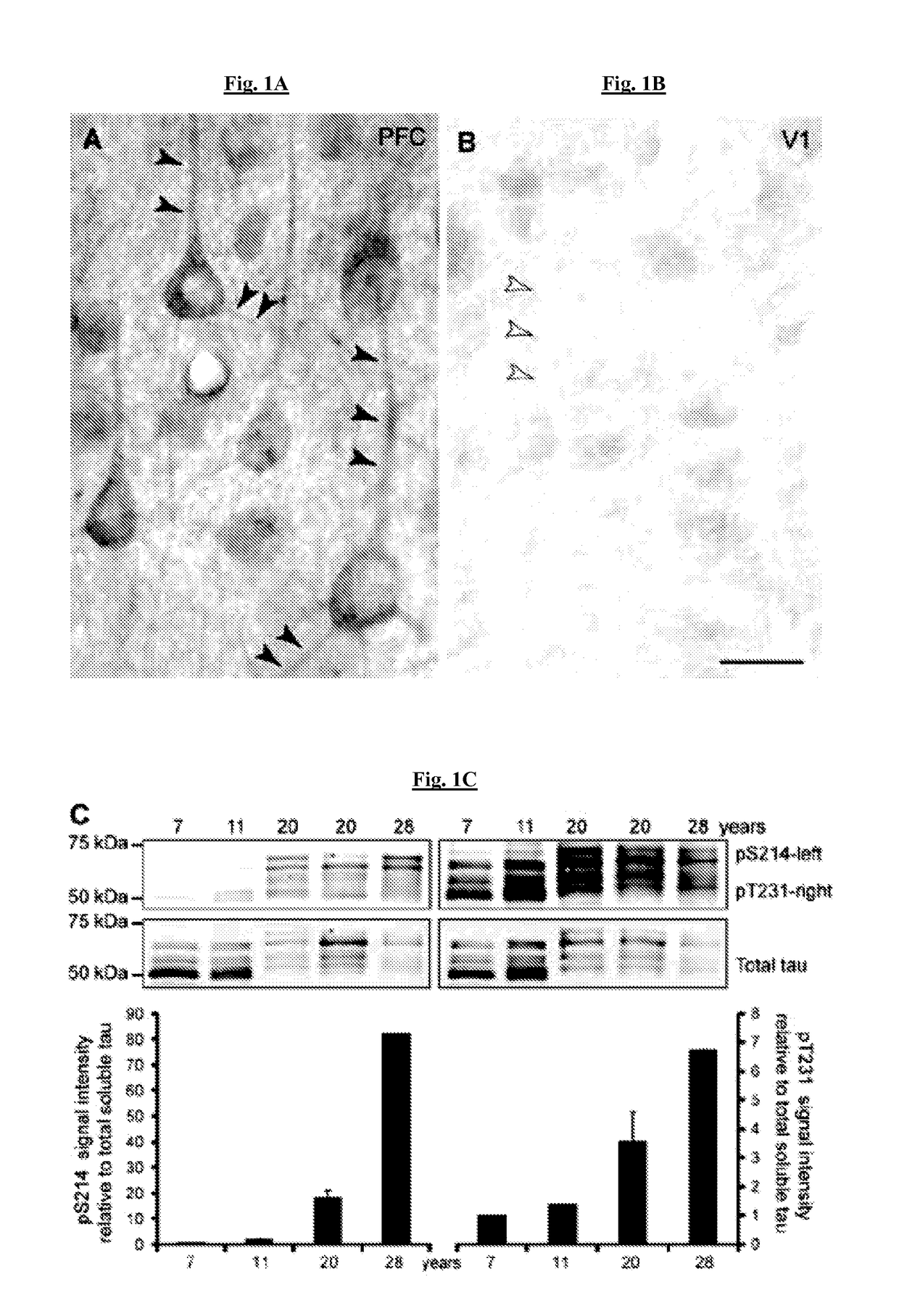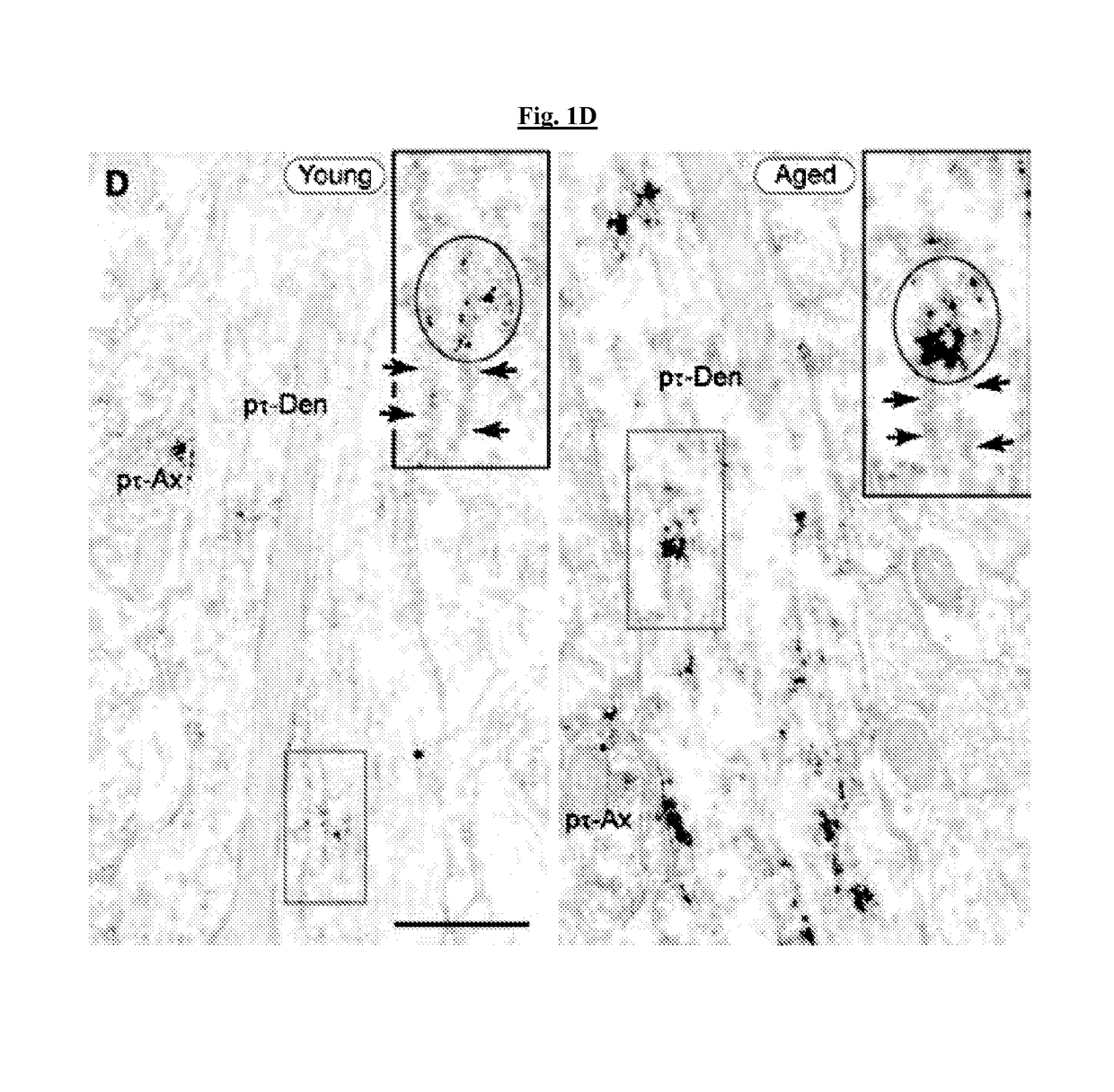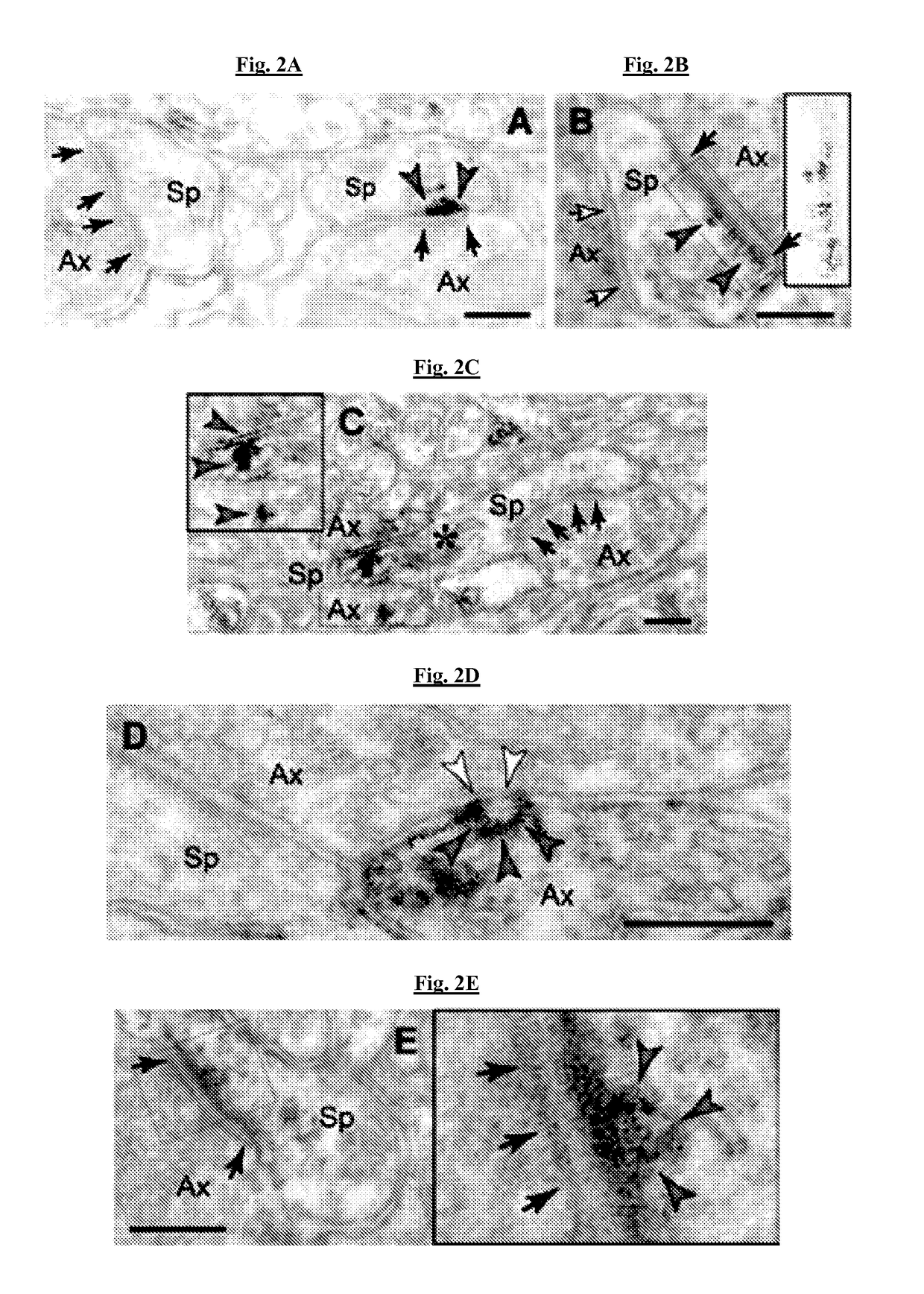Methods of preventing neurodegeneration of association cortex in a mammal
a technology of association cortex and mammalian brain, which is applied in the direction of nervous disorders, heterocyclic compound active ingredients, drug compositions, etc., to achieve the effect of preventing or reducing the risk of cortical degeneration
- Summary
- Abstract
- Description
- Claims
- Application Information
AI Technical Summary
Benefits of technology
Problems solved by technology
Method used
Image
Examples
example 1
[0153]Immunocytochemistry against pS214-tau in aged monkey revealed extensive reactivity of layer III pyramidal cells in dlPFC (FIG. 1A), but not in V1 (FIG. 1B), similar to the pattern of NFT in AD Immunoblotting of heat-stable preparations demonstrated a highly significant correlation of pS214-tau expression in monkey dlPFC with increasing age (r2=0.9922, p=0.0003), as well as age-related reductions in soluble tau, consistent with increasing fibrillation (FIGS. 1C and 5). Age-related increases in tau phosphorylation were also observed at threonine 231 (pT231; r2=0.9335, p=0.007; FIG. 1C), a site that is phosphorylated by a number of kinases, e.g. CaM kinase II, GSK-3 and cdk5 (Sengupta et al., 1998, Arch. Biochem. Biophys. 357:299). In contrast to the aging monkey, there were only background levels of pS214-tau and no significant change with age in pT231-tau in mouse medial PFC (FIG. 6), emphasizing that normal mice are not appropriate for modeling AD. Moreover, the aging monkey c...
example 2
[0158]Vulnerability to degeneration may also involve dysregulation of mitochondrial function, including increased accumulation of ROS. Excessive Ca2+ disrupts mitochondrial function, and increased cAMP-PKA activity with advancing age may also contribute to mitochondrial dysfunction. PKA phosphorylates COXIV (p-COXIV), which reduces ATP feedback and increases ROS production. The present data show that p-COXIV increases with advancing age in both primate and mouse prefrontal cortex. Thus, reducing cAMP-PKA signaling may reduce the production of harmful ROS both by decreasing the phosphorylation of COXIV, and by reducing PKA-induced increases in internal Ca2+ release. An increase in phosphorylation of COXIV with advancing age was observed in monkey dlPFC, and an increase in signs of ROS was observed in mouse PFC, consistent with mitochondrial dysfunction with advancing age (FIG. 16). Taken together, the present studies show that dysregulated cAMP-PKA signaling with advancing age is ass...
example 3
[0159]At the time of the invention it was not known whether α2A adrenoreceptor (AR) stimulation inhibits phosphorylation of tau or mitochondrial enzymes in aged primates. As demonstrated herein, daily treatment with cognitive-enhancing doses of the α2A adrenoreceptor agonist, guanfacine, reduces the expression of p-tau and phospho-COXIV-1 in the aging association cortex. This indicates that this class of compounds may be used as a preventive treatment for aging humans. Our data suggest that six months of daily treatment with guanfacine (0.001-0.01 mg / kg) enhances cognitive performance (FIG. 17B). The highest dose produced improvement in some monkeys but not in others, likely due to side effects at the higher doses.
[0160]Further, a pilot study showed that daily guanfacine treatment produced a dose-related reduction in phosphorylated tau at the pS214 site (FIG. 18) as well as decreasing phospho-COXIV-1 (FIG. 19) in the PFC of aged monkeys (n=1). As α2A agonists such as guanfacine have...
PUM
| Property | Measurement | Unit |
|---|---|---|
| diameter | aaaaa | aaaaa |
| time | aaaaa | aaaaa |
| time | aaaaa | aaaaa |
Abstract
Description
Claims
Application Information
 Login to View More
Login to View More - R&D
- Intellectual Property
- Life Sciences
- Materials
- Tech Scout
- Unparalleled Data Quality
- Higher Quality Content
- 60% Fewer Hallucinations
Browse by: Latest US Patents, China's latest patents, Technical Efficacy Thesaurus, Application Domain, Technology Topic, Popular Technical Reports.
© 2025 PatSnap. All rights reserved.Legal|Privacy policy|Modern Slavery Act Transparency Statement|Sitemap|About US| Contact US: help@patsnap.com



